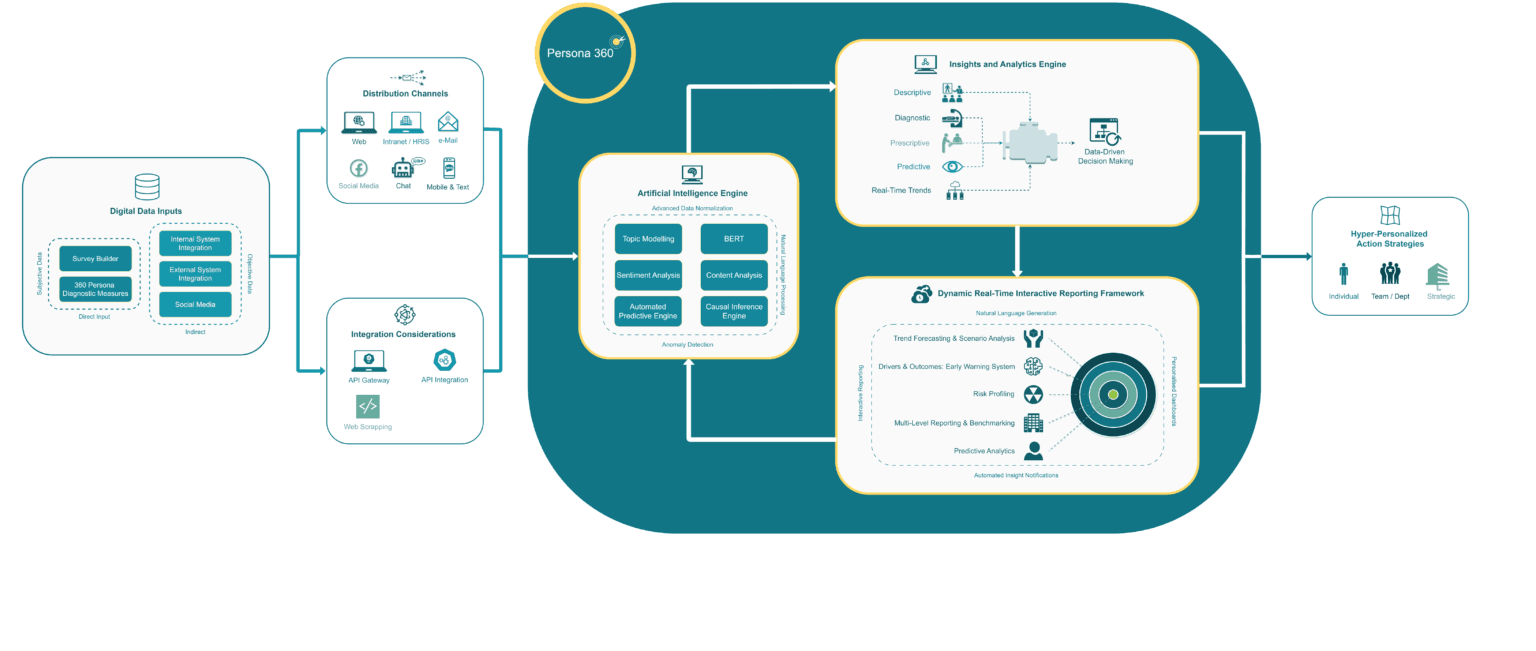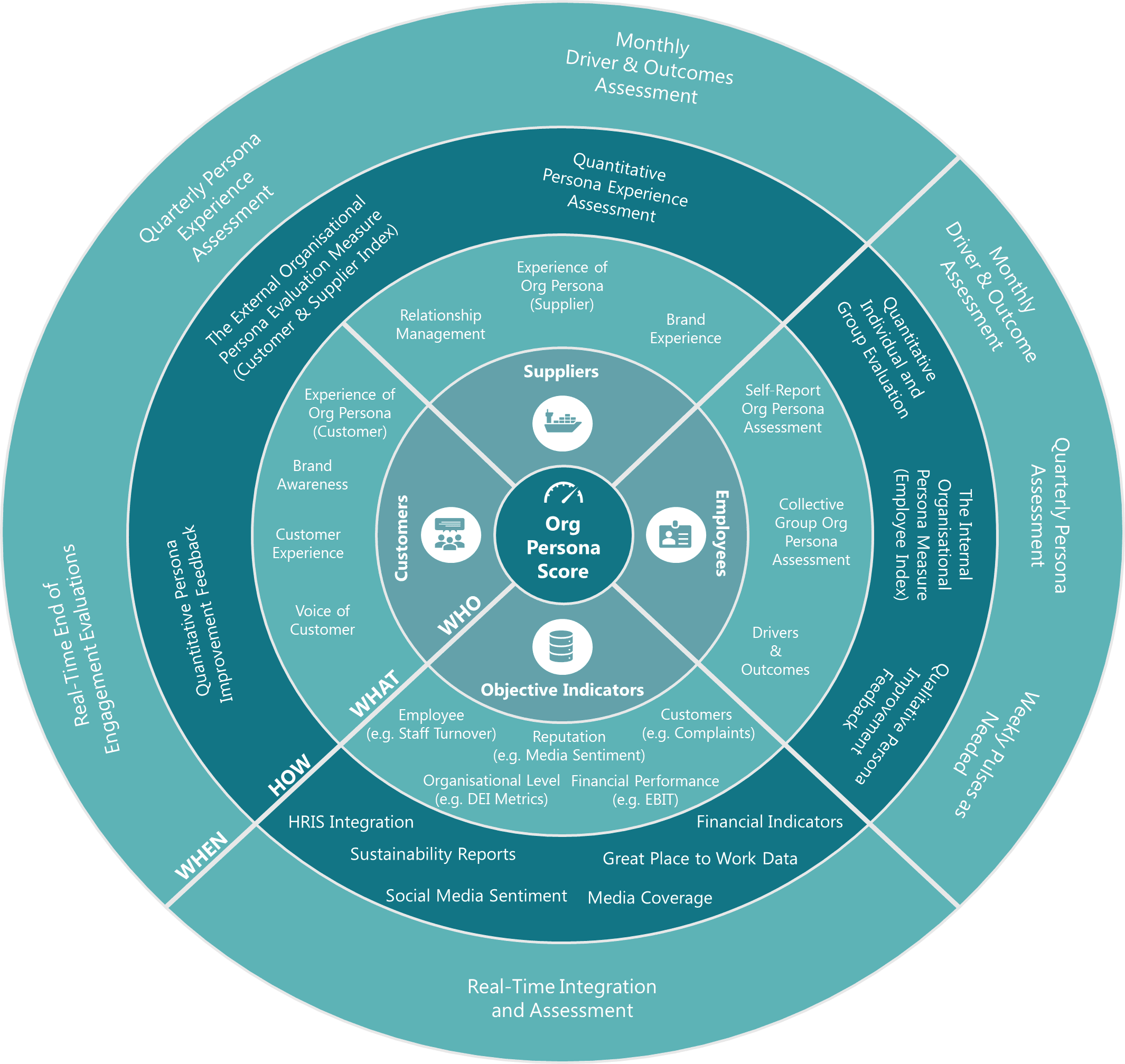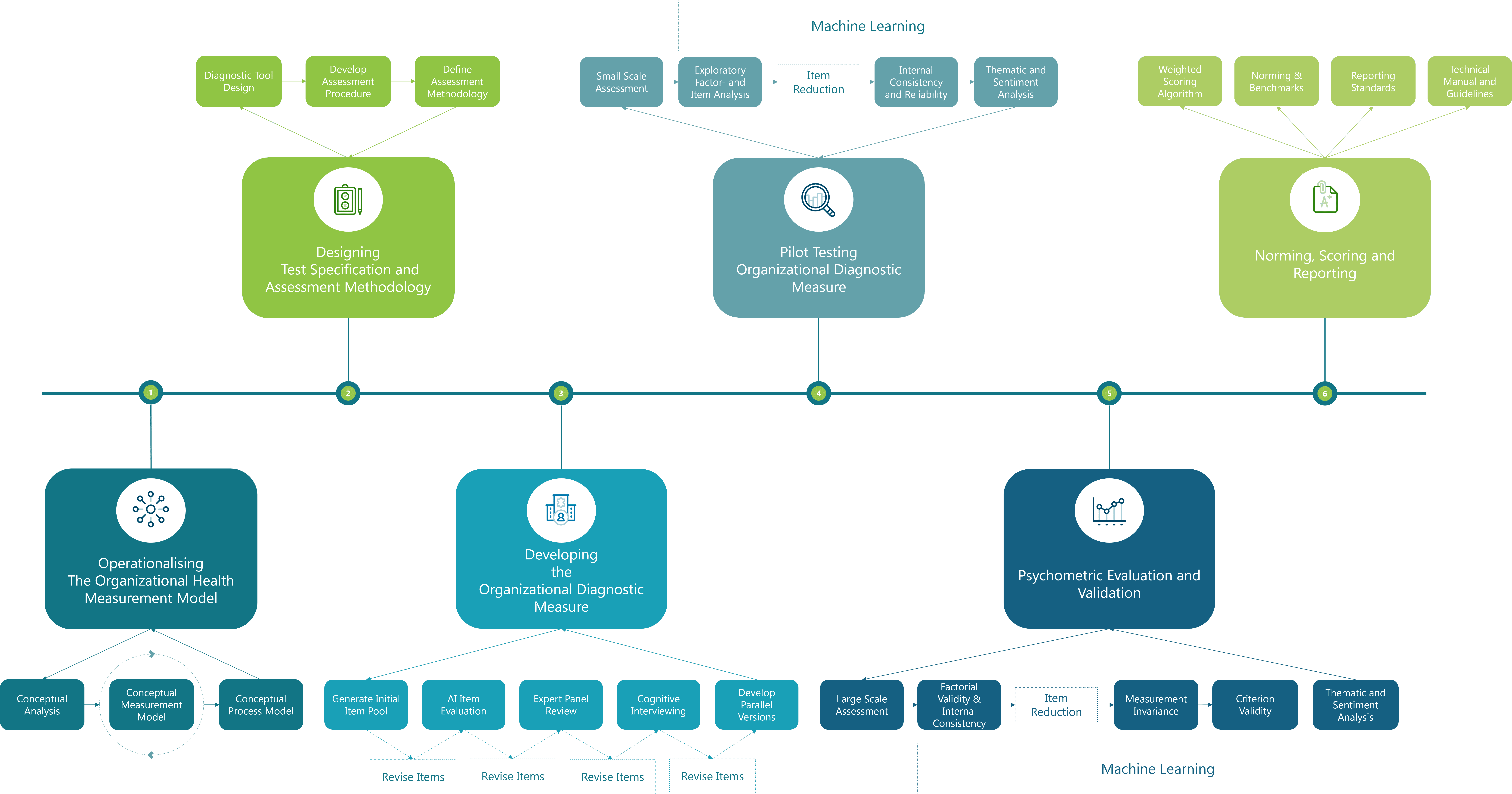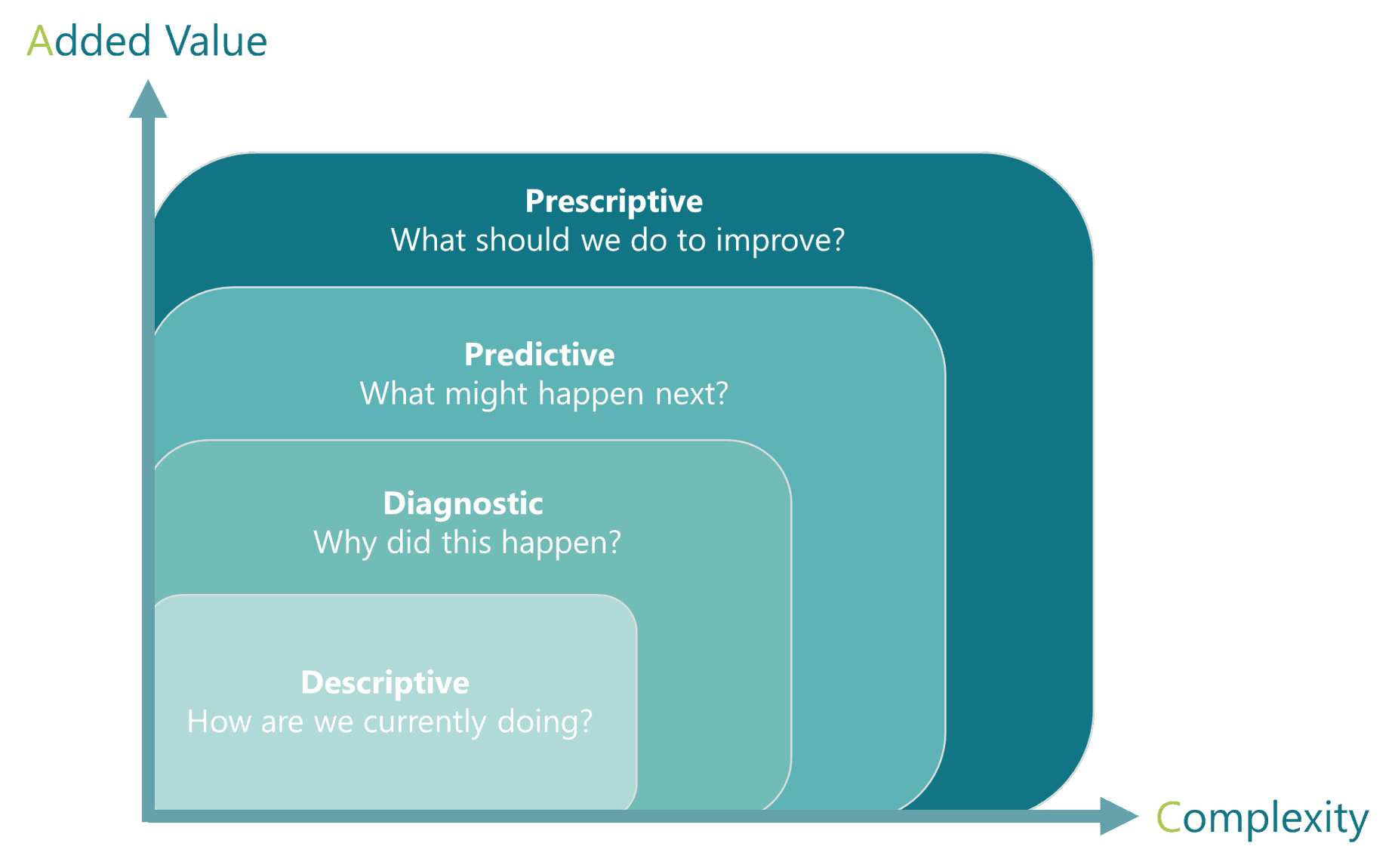Our Ai-Driven 360º Organisational Health Diagnostic Methodology
At Psynalytics, we develop tailored, science-based, data-driven organizational diagnostic solutions and assessment methodologies that provide meaningful insights.
We design AI-Driven, Multi-trait, Multi-Source, Multi-Method Diagnostic solutions and platforms that provides you with a holistic, real-time view of your organization’s health.
The Persona 360 Methodology
Our Methodology
The Persona 360 is an AI-driven organizational diagnostic methodology that helps companies stop wasting billions on interventions that don’t work. Current platforms only provide a narrow, one-dimensional view of organizational health, relying on outdated data and metrics that don’t link to business-critical outcomes like performance or turnover. We’re different.
The Persona 360 gives you a holistic, real-time view of your organization by integrating feedback from employees, customers, and suppliers, and combining both quantitative and qualitative data. Our approach doesn’t just describe the current state of your company; it diagnoses the root causes of problems, predicts future outcomes, and prescribes hyper-personalized action strategies at every level—individual, team, and organizational.
Further, we dont just stop at modelling employee experiences, our method allows companies to link these ‘soft’ metrics, like employee engagement, directly to ‘hard’ business outcomes, like EBIT and turnover. Thus, it provides an accurate reflection of how organizational dynamics affect actual performance, and we can thus provide actionable insights that truly drive growth.
Backed by real science and not just ‘evidence-based’ claims, Persona 360 is built by experts in psychology and AI to ensure your organization grows strategically and efficiently.”
Feature Set
Our methodological approach has several key features which makes it distinct from other approaches in the market:
- Holistic 360-Degree View: Provides a holistic analysis of organisational health by incorporating the views from internal (i.e. employees), and external (e.g. customers, clients, suppliers, communities) stakeholders.
- Informed by both Subjective and Objective Data Sources: Incorporates the voices of internal/external stakeholders (e.g. self-assessments) as well as objective indicators (e.g. HRIS information, customer complaints, social media monitoring). Fully integrated into internal- and external systems (e.g. CRM)
- Linked to Direct Business Outcomes: Connects diagnostics directly to core business metrics (e.g. revenue growth) to ensuring relevant and actionable insights.
- Understanding the Drivers and Outcomes of Org Health: Provide intelligence around the drivers and outcomes of organisational health to ensure that appropriate action can be taken that targets the right stuff.
- Based on Real-Time Data: Continuous data streaming ensuring decisions are based on the most current information.
- AI Driven Insights: Uses advanced supervised machine learning to analyse and integrate both qualitative and quantitative data from diverse sources to identify patterns, trends, and correlations that might not be apparent through traditional analysis method. This is used to provide hyper-personalised and multi-leveld action strategies to improve organisational health
- Provide a multi-faceted understanding of organizational issues, from current state analysis to future predictions: Aggregating and summarizing data to provide insights into current organisational health and performance (Descriptive). Identify root causes of current challenges or risks (Diagnostic). Forecast future trends and potential outcomes based on data analysis (Predictive). Monitor and report on evolving trends in real-time (Real-Time Trends). Recommend specific actions to improve alignment with organizational values (Prescriptive).
- Dynamic Real-Time Interactive Reporting. Deliver actionable insights to decision-makers in a timely, accessible, and relevant manner.






